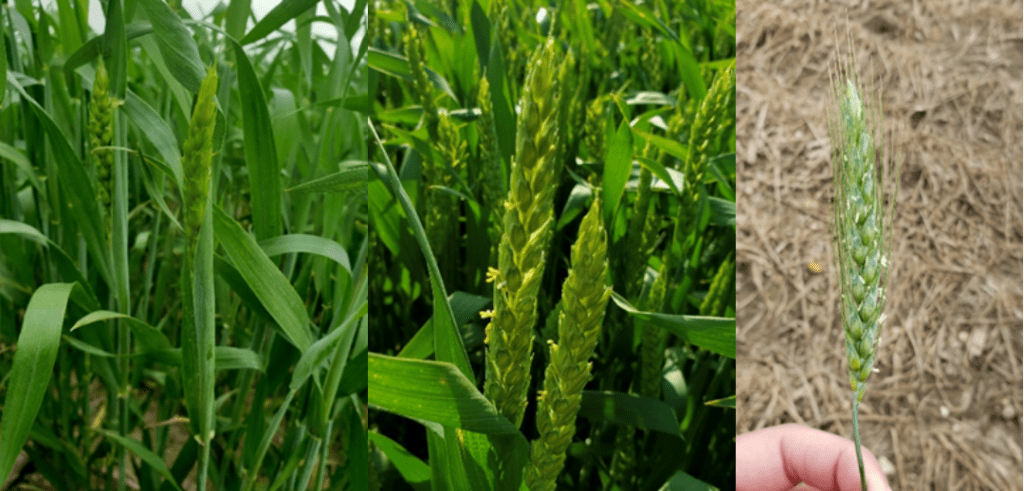Alyssa Koehler, Extension Field Crop Pathologist | akoehler@udel.edu
University of Delaware

Wheat anthesis will be occurring over the next few weeks. So far this season we have been at low FHB risk, but we will keep a close eye on the rain events predicted over the next two weeks. Some areas are getting a bit dry, so the rain is needed, but we hope for sun after rather than multiple grey days that keep canopy moisture high. If you are planning for wheat fungicide application, scout frequently looking for yellow anthers in the center of the wheat head to signal that flowering has begun (Feekes 10.5.1). Once around 50% of heads are flowering, fungicides (Caramba, Sphaerex, Miravis Ace, Prosaro, Prosaro-Pro) are most effective when applied within a 4-5 day window. Anthers can remain attached after flowering, but become a pale white (Figure 1). Once wheat has flowered, symptoms of FHB are visible in 18-24 days, but cool weather can slow symptom development. Heads with FHB will have bleached florets or bleached sections of the head (Figure 2) and may have pink growth on spikelets. Glume blotch may also be present, but typically has more of a grey appearance. You can follow these steps to assess the level of FHB present in your field.

- For every 10 acres of field, randomly select one spot to survey.
- Keeping your line of sight above the wheat heads, walk 40-50 yards and randomly pick 10-20 heads to look at on the plant or detach and place into a bag. (You don’t want to be looking down and biasing the heads you select).
- Once you have randomly collected the heads, rate the percent of each head with symptoms of FHB (bleaching or pink growth on spikelets).
- After you have recorded values for each head, determine the average percent FHB severity by dividing the sum of disease severities by the total number of heads collected. (Ex. You rate 10 heads with severity values: 0, 10, 30, 0, 0, 20, 10, 0, 0, 0. These add up to 70. 70/10 heads = 7% FHB severity). Higher levels of FHB are typically associated with elevated levels of DON and possible issues with yield and test weight. It is possible to have delayed or lower levels of symptoms and still have DON.
- Repeat this assessment as needed to get an overall rating for the field. Fields with greater than 10% FHB severity are at higher risk for yield losses or elevated DON. Fields with elevated DON should be harvested as early as possible and you may want to consider increasing combine fan speeds and shutter openings to reduce the amount of scabby kernels harvested.
